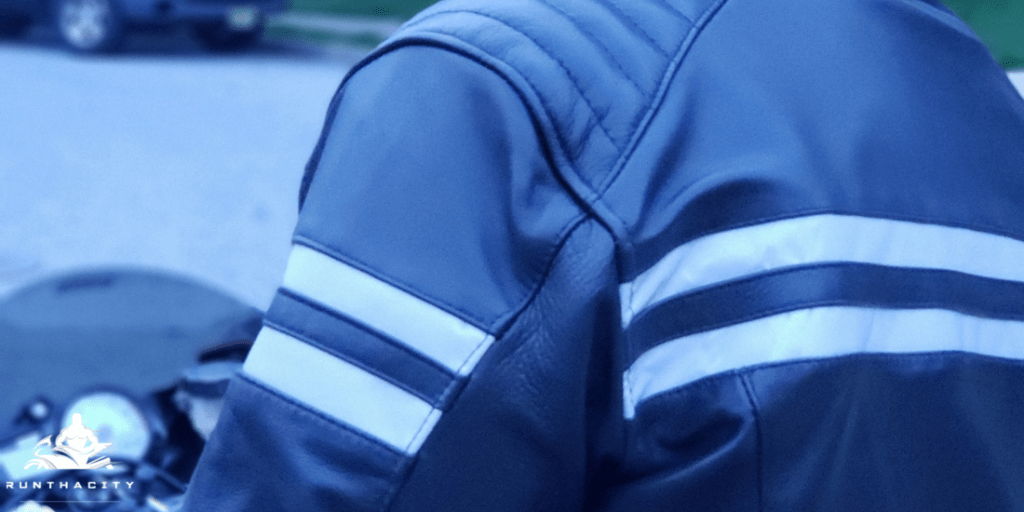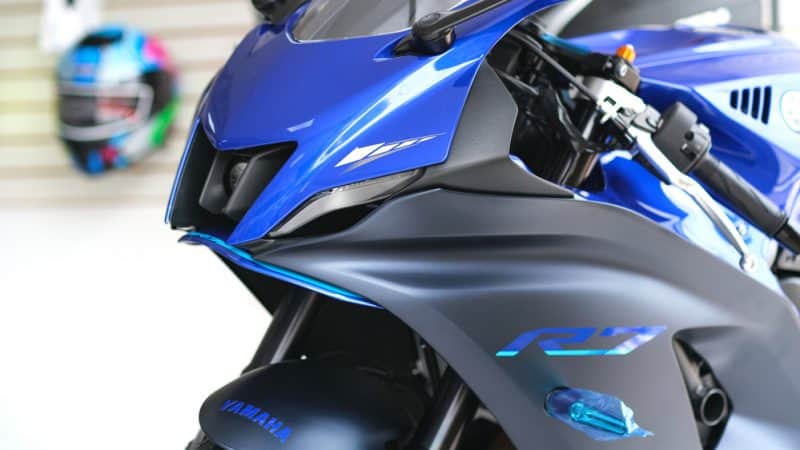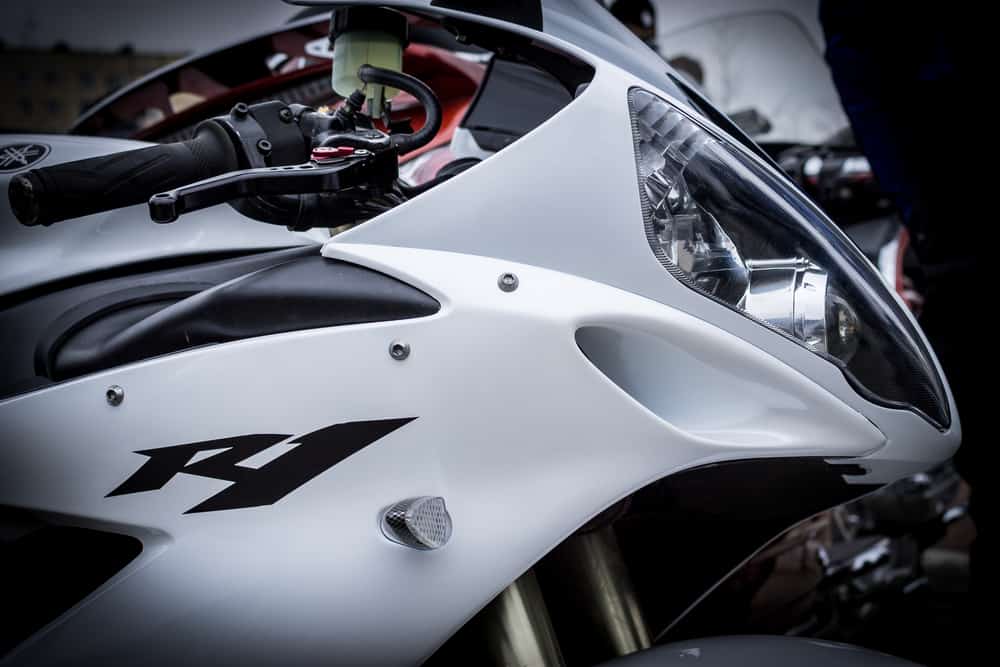Finding a Great Entry-Level Cycle Jacket - Viking Warlock Jacket Review
When critiquing motorcycle jackets, we have a tendency to judge them by the standards and needs of long-term, experienced cyclists. The unfortunate truth is that, for those just getting into motorcycling, these criteria may be a good bit different. For one thing, beginners will tend to spend somewhat less time on their bikes as they’re still getting a feel for them, and they’re less likely to be out there in the more extreme temperatures of high summer and mid-winter.
This means that some forgiveness in fitting and materials is called for when looking at a prospective first motorcycle jacket. In the case of the VikingCycle’s Warlock jacket, this may work out pretty well.
No products found.
The Look Of The Warlock Jacket
Well, let’s be honest with ourselves, we’re always going to demand that our jacket look really cool. It won’t do to look unstylish on our bikes, no matter if we’re a novice or a years-experienced rider. If the jacket doesn’t look good, nothing else matters. Maybe this isn’t the most prioritized way to think of things, but that’s just how it is.
While not the classic cruiser style so iconic in pop culture, this jacket does have a very modern classic vibe to it. It achieves a contemporary, unassuming but stylish look that blends many of the safety and comfort features of sport/street jackets, with the gentle form hugging and sleek nature that makes those cruiser jackets so beloved in the first place.
Moving forward, this even blend of these two styles will probably be somewhat timeless, which gives this jacket a unique future proof nature.
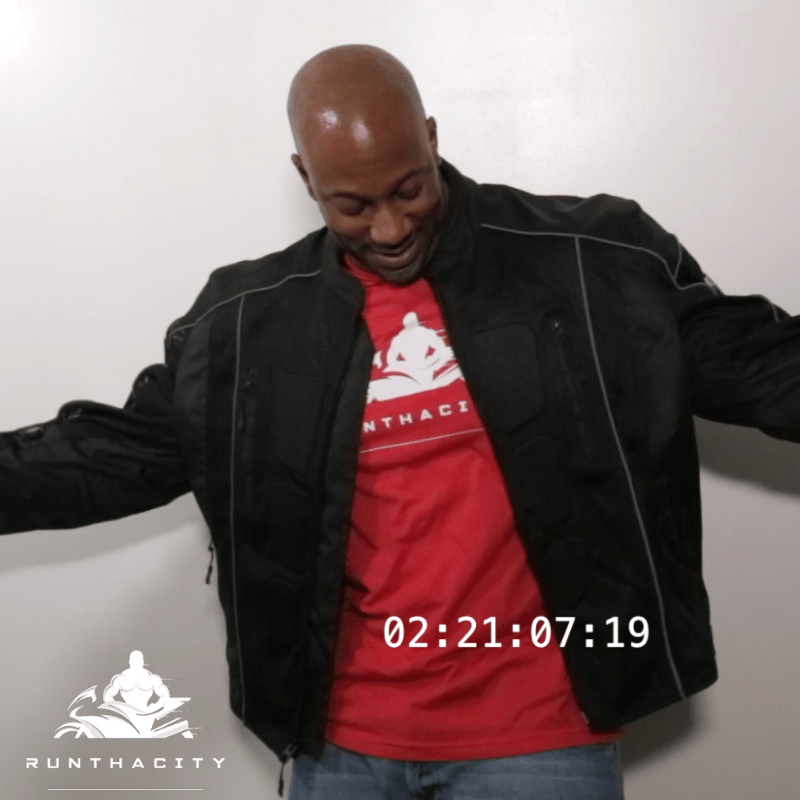
Comfort in a motorcycle jacket is a delicate balance. You don’t want to feel claustrophobic in the jacket, but at the same time, something too loose would have obvious problems. Similarly, you don’t want it to feel too bulky or heavy, but you want to feel like you’ve got something on. Finally, you want this balanced comfort to also provide good wind-cutting power, especially when it’s chilly out. Remember, the faster you go, the colder that air is going to be.
This jacket checks all but one of these boxes rather nicely. I felt like I had a solid jacket on, but I never felt claustrophobic, encumbered nor weighed down by it. The adjustable sleeves and collar meant that I didn’t feel like my circulation was cut off, but it still sealed me up well enough against the elements.
Unfortunately, the wind-cutting power of this jacket isn’t phenomenal, even with the liner in. It’s far from the worst, but in particularly chilly weather, the wind is still going to bite right into you with this jacket.
Motorcycle Jacket Safety
Safety is of course a big concern, especially for a beginner. This jacket manages to be pretty well-padded and abrasion-resistant, without feeling cumbersome. Granted, it’s not as fortified as a racing jacket, but I felt very safe in this jacket, especially thanks to the waist zipper that fastens to pants to provide a unified layer of protection.
It definitely passes my standards for safety, no question there.
VikingCycle’s Signature Rain Gear Fabric is a 100% 600D Polyester coated by PU (polyurethane). The 600D Polyester coated by PU, is also wind and water resistant so it will provide great protection against cold wind and rain and it will not sag and creates less wrinkle overtime. The fabric is light weight but highly resilient against abrasions to provide more resistance between the body and the road for your protection, and also stands against wear and tear for product durability.
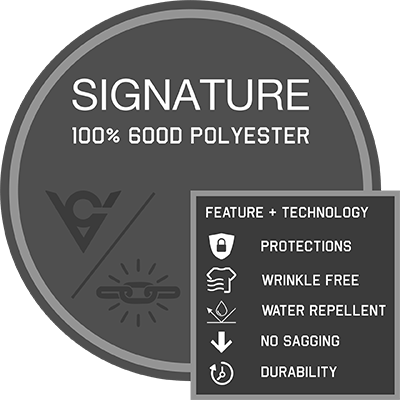
No products found.
Bells and Whistles
Finally, we come to the additional accoutrements this jacket offers. It’s not the most elaborate design out there, but it’s not without its charms.
- Large zipper tabs make it easy to operate the zippers with gloves on – something that can be exquisitely frustrating.
- Plenty of inside pockets for your phone, your wallet, etc. where they’re protected from the elements and impacts.
- Removable liner makes this jacket comfortable for warm and cool riding.
Warlock Jacket Textile Motorcycle Jacket Overview

No products found.
Pros and Cons
Pros
- This is an affordable jacket, especially for the quality, which is a major deciding factor for the beginner motorcyclist.
- The inside pockets are a nice touch.
- The neutral, non-aggressive style is timeless, contemporary and pairs with any style of bike.
- The zippers are phenomenal.
Cons
- Removable liner takes most of the inner pockets with it, and doesn’t cut wind well.
- Velcro is used in stead of button clasps – this is a noisy material that wears out and accumulates “fuzz”.
- There are synthetic materials in the cuffs that may be less durable.
Warranty Information
VikingCycle takes the highest pride to provide the best motorcycle gear craftsmanship and material in the world. We always stand behind all our product quality. If you experience any manufacturing defects on any of our items, please let us know and return it for a replacement within 1 year of purchase.
This warranty does not cover any item damage due to normal wear and tear or improper care. Normal wear and tear is unavoidable and it is a sign that the product has been worn, such as small scratches or color change.
To claim any manufacturing defect warranty and to get your replacement as soon as possible, please let us know by emailing us at info@vikingcycle.com with your order number and a photo of the product defect.
Conclusion
This jacket’s not perfect, but then, is anything ever truly perfect? As a seasoned rider, I’d personally purchase this jacket. It is affordable, comfortable and a stylish first jacket for a beginner? I’d definitely be happy recommending the Warlock jacket.
To purchase, click here:
No products found.
To learn more about choosing the ideal motorcycle jacket for your needs, subscribe to my YouTube channel today!
No products found.
You Might also like
-
Viking Cycle Bloodaxe Leather Motorcycle Jacket Review
When it comes to motorcycle jackets, you want something that balances the need to look like you own the road and enough protection to keep you from becoming part of the road. Viking Cycle, a brand based out of California, has been turning heads with their attention to detail and security in their full range of motorcycle clothing for men and women. The best part is the price tag.
“As an Amazon Associate I earn from qualifying purchases.”Overview of the Bloodaxe Motorcycle Jacket
Out of the box, the Bloodaxe looks awesome and feels awesome. When the jacket first goes on, you’ll notice it’s a bit stiff—but it does loosen up with some wear, as good leather should. The zippers have solid construction, open and close smoothly, and lay well when you’re riding.
The biggest advantage of the Viking Cycle Bloodaxe isn’t the awesome name but the amount of storage. You won’t believe the amount of storage space you have with this jacket. There’s so much, it’s almost ridiculous.
There is a headphone wire system that you can feed into the collar of the jacket, earphone pockets, a media player pocket, cellphone pocket with 3 second access, 2 knife and pen pockets, an eyeglass pocket, a pocket designed to find a 10-inch tablet, extendable keyholder, and another pocket that can fit travel documents and your wallet. The pockets have a unique “no bulge” design, so even if you somehow managed to stuff every single compartment this jacket has, it will still look flat and sleek and not like a bubble jacket. Overall, it sits nice on the body and doesn’t feel stifling.
The sizing does run a little small. Someone around 5 foot, 10 inches, 180 pounds will fall into the M-L range, depending on how much you want to bundle up. If you take out the thermal lining or don’t want to wear a lot of clothing underneath, you might want to size down to prevent the jacket from floating on you.
“As an Amazon Associate I earn from qualifying purchases.”No products found.
No products found.
Specifications
(listed adapted from vikingcycle.com)
- Construction – Drum-dyed soft genuine cowhide leather (milled buffalo), padded shoulders, and Viking cycle level 1 removable “armor” on elbows and spine; two intake vents on the top of the shoulders and exhaust vents in the back
- External Storage – 2 zippered chest pockets, 2 zippered side pockets, and a single sleeve pocket
- Internal Storage – 2 secured zippered pockets and a secret compartment
- Adjustability – waist snaps and sleeve zippers
- Visibility – High viz stripes located on the back and shoulders
Pros
- Sag and wrinkle resistant
- Wind and water resistant
- Abrasion resistant
- A ton of hidden pockets on the internal side of the jacket
- CE marked armor in the back and shoulders – comfortable and stays in place while riding around
- Budget-friendly cost without a lack of quality and safety
- Stylish design
Cons
- Can be hot – the jacket has a thermal lining and is heavy, so it can be oppressive in the summertime even with the vents open. For that reason, it might not be ideal for moving in slower paced traffic;
- CE armor level could be higher.
Warranty Info
Viking Cycle offers a 1 year manufacturer’s warranty on all of their products. This means that any defects or imperfections that you find are covered. The warranty does not cover wear and tear or damages caused from improper care.
This might raise some questions about durability, since some production errors or faults can take a few days or weeks to appear.
If you start to notice something odd going on with the jacket that you didn’t cause, you can contact Viking Cycle at info@vikingcycle.com with the order number and a photo of the defect to get an exchange or refund.
No products found.
Conclusion
Honestly, for the quality of the jacket, you would expect to pay more for it than you do. The name might be a bit for metal than what this motorcycle jacket offers, but the sleekness of the design, paired with the sound construction and unheard of amount of storage makes it a clear winner. If you’re looking for a balance of style and safety without breaking your bank, I recommend the Viking Bloodaxe motorcycle jacket for your wardrobe.
Looking for more details about choosing motorcycle jackets and other riding gear? Then check out and subscribe to my YouTube channel today!
No products found.
No products found.
-
Viking Moto Motorcycle Backpack Review
Viking Moto Motorcycle Backpack Review
Let’s all agree that the biggest problem with our bikes being daily transportation is the lack of hauling capacity.
So, just as in our scholastic days, backpacks to the rescue! But not just any backpack will do. We’re out in the elements, we’re hauling heavier stuff than a few books, and of course, we don’t want to look like a vagabond. That’s where awesome designs like the Viking Bag’s Motorcycle Backpack shine.
This isn’t your high school backpack, oh no. This Cordura backpack features a modern classic look with leather trim and an understated aesthetic that will match your jacket and your bike, no matter what type of bike you like to ride.
Let’s take a closer look at this awesome bag, and how it can make your daily rides so much cooler.
Shot and Edited by Shaun Maddox
https://shaunmaddox.com/
https://www.instagram.com/shaunmaddox/Construction
As I said, this backpack is made of Cordura, a modern marvel of material sciences that fits comfortably on your body, while not being a floppy, frail backpack. With dimensions of 18.5”x12.5”x5”, you can carry groceries, personal items, or personal items with ease and comfort no other bag can offer.
Need more organization, or to haul some electronics with you? Well, Viking’s completely onboard with 21st-century life, including a laptop sleeve and stretchy, sewn in pockets for organizing your styluses, connection cords, your phone, and anything else delicate and vital you may need to carry.
That’s not even the coolest thing this bag can do. We all know how important our helmet is for safety, but when we get off our bike, it becomes a cumbersome nuisance to carry around or somehow safely secure to our bike. With this Viking bag, that’s not an issue, thanks to the stretchy helmet lining which can hold pretty much any helmet of any size no problem.
Gone are any excuses, whatsoever, to forego your helmet. You know who you are!
The Feel
I took one of these out for a day ride, that is about 6 hours round trip, to go shopping in another area (I usually wouldn’t, but it’s a good field test for gear like this). By the time I reached my destination, I almost forgot this bag was even attached to me, and that was with a heavy laptop and backup battery in my bag.
I did, however, notice that as I took the bag off when going into a restaurant, that my shirt was a bit damp, as I’d sweat from where it blocked air flow to an extent. However, having had other bags leave the back of my shirt completely soaked through, I’d call this a considerable improvement in that department. Given this bag is weatherized, it kind of can’t have the airflow of something mesh, and I’d rather sweat a tiny bit while having my stuff protected from the elements.
What really caught my attention was the lack of soreness or discomfort across my shoulders, neck and upper back. I’m a broad-shouldered fellow, which means most backpacks with any weight, tend to tug on muscles and leave me sore or even numb – the broad design of the straps both across the shoulders and waist, didn’t cause that problem at all.
Pros and Cons
Pros
- This is an attractive bag that doesn’t scream “hobo” or “kid”, with a professional yet casual aesthetic that matches any jacket well enough.
- It’s weatherized, and will protect everything with gusto.
- It’s very comfortable, and the strap designs don’t cause soreness, discomfort or circulation problems.
- I can carry my electronics in an organized fashion – this modern thinking is lost on a lot of biking gear companies.
- The helmet lining does the biking community two great services by making our helmets no longer a nuisance, and eliminating any excuses for anyone to foolishly leave their helmets behind.
Cons
- Being weatherized, you will sweat a little bit, it can’t be helped.
- While attractive, the black may not be everyone’s taste.
- I know a few hefty guys who might find the fit of this bag, adjustable as it is, to be a bit precarious.
ADDITIONAL DETAILS
- Heavy duty Cardura Construction.
- Reflective piping for additional night time visibility.
- Built in helmet hood.
- Fits most 15″ laptops in padded compartment.
- Detailed organizer for your keys, wallet and other small items.
- Protective eyewear pocket.
- Duraflex® buckles throughout for added strength.
- Audio Ready.
- Height and width adjustable sternum strap.
- Aerodynamic molded body.
Conclusion
I like this bag. It’s not perfect, and I can see some room for improvement in variety of color schemes as well as a bit more adjustability in the straps for bigger people. I’d also like to see another model that’s stretchier, for if I have more stuff to haul back.
Nonetheless, this is a nice bag, and if you ride your bike for daily things like I do in decent weather, you owe it to yourself to give a bag like this a try!
-
Exploring the World of Yamaha Sportbikes: A Beginner’s Guide
If you’re new to the world of sportbikes, Yamaha is a great place to start. With a wide range of models, there’s a Yamaha sportbike for every rider, whether you’re a beginner or a seasoned pro. In this guide, we’ll take a closer look at what Yamaha has to offer and help you find the perfect sportbike for your needs.
Understanding the Different Types of Yamaha Sportbikes
When it comes to sportbikes, Yamaha offers a wide range of models to choose from, each with their own unique characteristics and features. Understanding the different types of Yamaha sportbikes can help you narrow down your options and find the perfect bike for your needs.
- Sportbikes: These are the most powerful and agile bikes in Yamaha’s lineup, built for speed and handling. They include models like the R1, R7, R6, and R3. These bikes feature aerodynamic bodywork and are designed to be ridden at high speeds. They typically have high-performance engines and advanced suspension systems, making them ideal for track riding and sporty street riding.
- Supersports: These are similar to sportbikes but with a more comfortable riding position and slightly less power. They include models like the FZ-09 and FZ1. These bikes are built for riders who want the performance of a sportbike but with a more relaxed riding position. They typically have slightly detuned engines and more comfortable seats, making them a great option for long-distance riding.
- Naked Bikes: These are sportbikes with no fairings or bodywork, giving them a more raw, stripped-down look. They include models like the FZ-07 and FZ-10. These bikes are designed to be ridden in a more upright position and often have more accessible power and torque. They’re more versatile than sportbikes and can be used for both city and highway riding.
- Sport Touring Bikes: These are sportbikes with added features for long-distance riding, such as comfortable seats and large storage capacity. They include models like the FJR1300 and Super Ténéré. These bikes have more comfortable seating, wind protection, and luggage capacity. They’re designed for long-distance riders who want the performance of a sportbike but with the added convenience of touring features.
By understanding the different types of Yamaha sportbikes, you can make a more informed decision about which bike is right for you. Whether you’re a beginner looking for an entry-level bike or an experienced rider looking for a track-ready machine, Yamaha has a sportbike that will fit your needs.
Getting to Know the Yamaha R Series
The Yamaha R Series is a line of sportbikes that is well-known for its high-performance engines and advanced suspension systems. The R Series includes models like the R1, R6, and R3. These bikes are designed for riders who want the ultimate in speed and handling, and are some of the most powerful and agile bikes in Yamaha’s lineup.
- Yamaha R1: The R1 is the flagship model of the R Series. It is powered by a 999cc liquid-cooled, inline four-cylinder engine that produces over 200 horsepower. The R1 also features a slipper clutch, advanced suspension system, and a quick-shifter. This bike is designed for experienced riders who want the ultimate in speed and handling.
- Yamaha R6: The R6 is another popular model in the R Series. It is powered by a 599cc liquid-cooled, inline four-cylinder engine that produces over 130 horsepower. The R6 also features a slipper clutch, advanced suspension system, and a quick-shifter. This bike is designed for experienced riders who want a sporty, high-performance motorcycle with a more manageable power output.
- Yamaha R3: The R3 is the entry-level model of the R Series. It is powered by a 321cc liquid-cooled, inline twin-cylinder engine that produces over 41 horsepower. The R3 also features a slipper clutch, advanced suspension system, and a quick-shifter. This bike is designed for beginner riders who want to experience the thrill of a sportbike, but with a more manageable power output.
Overall, the Yamaha R Series is a line of high-performance sportbikes that is perfect for riders who want the ultimate in speed and handling. Whether you’re an experienced rider looking for a track-ready machine or a beginner looking for an entry-level bike, the R Series has a model that will fit your needs.
Yamaha R7: The Controversial Model
The Yamaha R7 was a limited edition sportbike that was produced by Yamaha from 1999 to 2002. The bike was based on the YZF-R1, but featured a smaller engine and a more compact frame. The R7 was designed to compete in the Superstock class of road racing, and it was quite successful in that regard.
However, the R7 was also notorious for its high price tag and limited availability. At the time, it cost significantly more than the standard R1, and only 500 units were produced each year. This made the R7 a highly sought-after bike, but also one that was difficult to obtain.
Another controversial aspect of the R7 was its engine. The R7 was powered by a 749cc liquid-cooled, inline four-cylinder engine that produced around 120 horsepower. This was less than the standard R1, which produced around 150 horsepower. Some critics felt that the R7’s engine was underpowered for its price tag, while others praised its smooth power delivery.
Despite its controversies, the Yamaha R7 remains a highly respected bike among sportbike enthusiasts. Its rarity and exclusivity make it a highly desirable bike, and its performance on the track is still highly regarded. However, it is important to remember that the R7 was designed for a specific purpose, as a Superstock racing bike, and it’s not a bike for everyone. It might not be suitable for daily riders or for those who want a more versatile motorcycle.
Other Yamaha Sportbikes to Consider
In addition to the R Series, Yamaha offers a variety of other sportbikes that are worth considering. Some of the other popular models include:
- Yamaha FZ Series: This is a line of sportbikes that is designed for riders who want a balance of speed and practicality. The FZ Series includes models like the FZ-09, FZ-07, and FZ-10. These bikes are powered by liquid-cooled, inline four-cylinder engines and feature advanced suspension systems. They are perfect for riders who want a sporty motorcycle that can be used for both commuting and weekend rides.
- Yamaha MT Series: This is a line of sportbikes that is designed for riders who want a more aggressive riding position. The MT Series includes models like the MT-09, MT-07, and MT-10. These bikes are powered by liquid-cooled, inline four-cylinder engines and feature advanced suspension systems. They are perfect for riders who want a sporty motorcycle that can be used for both commuting and weekend rides, but with a more aggressive riding position.
- The V-Max: This is a muscle bike that is powered by a massive 1,679cc liquid-cooled, V4 engine. It produces over 170 horsepower and features advanced suspension systems. It is designed for experienced riders who want a powerful and unique motorcycle that can be used for both commuting and weekend rides.
- The Super Ténéré: This is a adventure bike that is powered by a liquid-cooled, parallel twin-cylinder engine. It produces over 110 horsepower and features advanced suspension systems. It is designed for experienced riders who want a powerful and unique motorcycle that can be used for both commuting and weekend rides.
Overall, Yamaha offers a wide range of sportbikes that are perfect for riders of all experience levels. Whether you’re a beginner looking for an entry-level bike or an experienced rider looking for a high-performance machine, Yamaha has a model that will fit your needs.
Choosing the Right Yamaha Sportbike for You
When choosing a Yamaha sportbike, it’s important to consider your experience level, riding style, and budget. If you’re a beginner, the R3 or FZ-07 may be a good place to start. If you’re an experienced rider looking for a track-ready bike, the R1 or R6 may be a better fit. And if you’re looking for a sporty yet versatile ride, the FZ-09 or FZ1 may be the perfect choice.
In conclusion, Yamaha has a lot to offer for sportbike riders, from entry-level bikes to track-ready machines. Take the time to research and compare different models, and make sure to test ride a few before making a decision. With the right Yamaha sportbike, you’ll be able to enjoy the thrill of the ride and push your limits on the road or track. Don’t forget to also consider the cost of ownership, including insurance, maintenance, and accessories. Overall, Yamaha Sportbikes are a great choice for any rider looking for a high-performance motorcycle that offers a balance of power, handling, and versatility. Happy riding!


